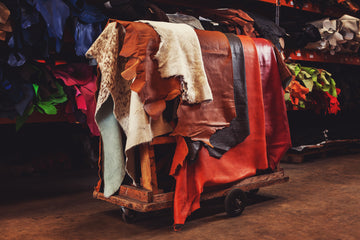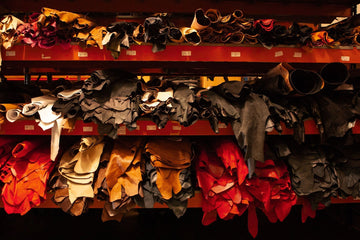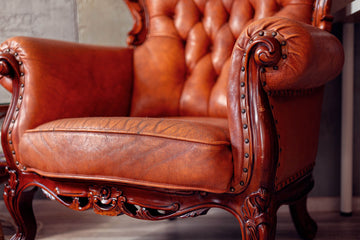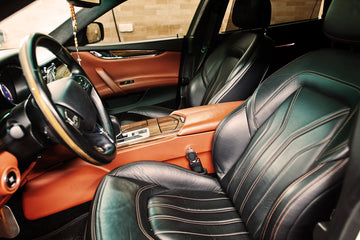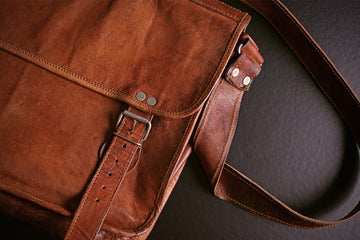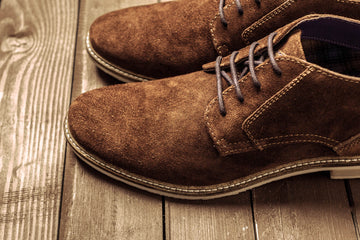Are you trying to choose between faux leather and real leather? This article breaks down the essential differences, including cost, durability, and ethical factors, to help you decide which is best for you.
Key Takeaways
-
Faux leather is cost-effective and made from synthetic materials, while real leather, due to its natural origin, offers durability and a unique character.
-
Real leather has a longer lifespan and can develop a beautiful patina over time, but it requires proper care and is more expensive upfront than faux leather.
- The environmental impact varies: real leather is biodegradable but involves higher environmental costs during production, while faux leather is made from non-biodegradable materials and contributes to landfill waste.
Understanding Faux Leather and Real Leather
Faux leather, often called fake or synthetic leather, is commonly made from synthetic materials like PVC or PU. It’s designed to mimic the look and feel of real leather but comes at a fraction of the cost. On the other hand, real leather is made from tanning animal hides, predominantly cattle hides, and is renowned for its unique patterns, distinctive smell, and beautiful imperfections.
The key differences between real leather and faux leather lie in:
- Origins
- Characteristics
- Durability
- Smell
- Texture
While faux leather is known for its uniform patterns and affordability, real leather stands out for its durability and the character it develops over time. These differences influence the aesthetic appeal, sustainability, and ethical considerations of each material.
Knowing these fundamental differences can help you make an informed choice based on your priorities: durability, cost, or ethical considerations.
Manufacturing Processes
Faux and real leather have distinct manufacturing processes, each involving unique steps and materials. Real leather production starts with:
- The selection of high-quality animal hides
- Cleaning the hides
- Tanning the hides can vary, using methods like chrome tanning or vegetable tanning, each imparting different characteristics to the leather
- Treating the leather to create a durable material
Faux leather is primarily made from synthetic materials, notably polyurethane (PU) and polyvinyl chloride (PVC). These materials are treated to mimic the appearance and texture of genuine leather by applying a plastic coating over a base fabric. This process enhances the durability of faux leather and makes it easier to clean than real leather.
Real Leather Production
The production of real leather involves several key steps:
- Selection of animal hides, commonly sourced from cows, horses, and rabbits
- Cleaning the hides
- Removing hairs
- Drying
- Conditioning
- Tanning
- Finishing
The most common type of leather fabric used is cowhide, which is known for its durability and versatility.
Tanning transforms raw animal hides into durable leather. Various tanning methods are used, including chrome and vegetable tanning, each impacting the leather’s final characteristics. Chrome tanning is faster and results in softer leather, while vegetable tanning uses natural tannins and produces firmer, more traditional leather.
Finally, the leather is dyed and finished to achieve the desired colour and texture. This intricate process underscores the craftsmanship in creating high-quality leather products, making real leather sought after for its durability and aesthetic appeal.
Faux Leather Production
Faux leather, known as synthetic leather, is made primarily from materials like Polyurethane (PU) and Polyvinyl Chloride (PVC). The production process involves applying a plastic coating to a fabric base, often made of polyester or cotton, to create a material that mimics the look and feel of real leather. This process includes stabilisers, plasticisers, and lubricants to enhance flexibility and durability.
For PVC leather, the plastic is applied to a fabric backing. In contrast, PU leather is made by chemically reacting isocyanates and polyols to form a flexible polymer coated onto the fabric base. These synthetic materials provide a cost-effective and versatile alternative to real leather.
The binding process in the faux leather manufacturing typically involves melting the plastic and applying it to the underlying fabric, ensuring that the final product is durable and easy to clean. However, the quality of faux leather can vary significantly depending on the materials and methods used, impacting its overall longevity.
Durability and Longevity
The differences between real and faux leather are stark regarding durability and longevity. Real leather is known for its exceptional durability, which has often maintained its integrity and usability for decades. This makes it a preferred choice for many consumers looking for long-lasting materials.
Conversely, faux leather generally has a shorter lifespan, often requiring replacement sooner. Due to its reduced durability, its initial affordability doesn’t translate into long-term value.
Real Leather Durability
Renowned for its durability, real leather often lasts for decades with proper care. This durability makes it an excellent investment, offering significant savings over time compared to synthetic alternatives. The longevity of real leather products can result in a better long-term return on investment, as they often outlast their faux leather counterparts.
One key factor contributing to real leather's durability is its ability to develop a patina over time. This natural ageing process enhances the leather's aesthetic appeal, making it more attractive as it ages. Additionally, real leather is breathable and softens with use, providing a comfortable and long-lasting material for various applications.
Proper care is essential for maintaining the durability of real leather. Regular cleaning and conditioning help prevent drying and cracking, ensuring the leather remains flexible and durable for many years.
Faux Leather Longevity
Though more affordable, faux leather typically has a shorter lifespan than real leather. It is prone to cracking and peeling, significantly reducing its durability. These durability issues often mean faux leather products must be replaced more frequently, leading to higher costs in the long run.
The expected lifespan of faux leather products is generally between 2 and 5 years, depending on the quality and usage. This shorter lifespan can be a drawback for consumers looking for long-term value. Additionally, faux leather does not wear out attractively, often showing signs of wear and tear that detract from its appearance.
Despite these drawbacks, faux leather is still popular for budget-conscious consumers. Its lower initial cost and ease of maintenance make it an attractive option for those needing a cost-effective and stylish alternative to real leather.
Long-Term Value
Although initially more expensive, real leather often proves more economical in the long run due to its longevity. Its durability means fewer replacements, leading to significant savings over time.
Despite its lower initial cost, faux leather's shorter lifespan and susceptibility to wear and tear often result in higher long-term costs due to frequent replacements. Therefore, while faux leather is budget-friendly upfront, real leather can be a more cost-effective choice over the product's lifetime.
Environmental Impact
The environmental impact of faux leather and real leather is a critical consideration. Real leather is biodegradable, but has higher ecological costs due to tanning processes that can cause chemical runoff and other issues.
Conversely, faux leather is made from petroleum-based, non-biodegradable materials like PVC and PU, contributing to landfill waste and releasing harmful chemicals during production.
Real Leather Environmental Impact
Real leather is biodegradable, a significant environmental advantage over synthetic materials. Leather biodegrades in 10 to 50 years, much quicker than synthetic materials like PVC. Nevertheless, leather production has higher ecological costs due to tanning processes that can cause chemical runoff.
Despite these drawbacks, the use of real leather incorporates byproducts from the meat industry, eliminating the need for additional animal farming solely for leather production. This utilisation of byproducts can be regarded as a form of recycling, minimising waste from the food industry.
Moreover, real leather’s durability and longevity mean that products made from it do not need to be replaced as frequently, reducing the overall environmental impact. This long lifespan can offset some of the initial ecological costs associated with its production.
Faux Leather Environmental Impact
Faux leather, often made from oil-based products, typically does not meet the same environmental standards as real leather. The production of faux leather involves treatments with coatings that can contain harmful chemicals, raising environmental concerns. Additionally, synthetic materials in faux leather, like polyester or nylon, are generally non-biodegradable and contribute to landfill waste.
The production process of faux leather can create significant environmental waste and is often associated with higher carbon footprints due to using petroleum-based products. These factors make faux leather less environmentally friendly than real leather.
However, industry innovations are focused on creating more eco-friendly alternatives, such as plant-based and bio-based leathers, which aim to reduce the environmental impact of faux leather production. These alternatives include materials made from pineapple leaves, mushroom mycelium, and apple peels.
Comfort and Feel
The comfort and feel of leather, whether real or faux, play a significant role in user satisfaction. The tactile experience differs significantly between faux and real leather, impacting overall comfort levels. Understanding these sensory differences can help consumers choose the material that best suits their needs.
Real leather provides a more dynamic sensory experience as it warms up to body temperature, enhancing comfort. In contrast, faux leather often remains colder and less responsive to the touch, affecting the overall feel and comfort.
Texture and Appearance
Real leather typically exhibits unique imperfections and textures valued for authenticity and character. These natural markings and variations in texture patterns contribute to real leather’s aesthetic appeal, making each piece unique. This quality allows real leather products to develop a rich patina over time, adding to their charm and value.
Faux leather is often designed to have:
- A consistent texture and colour appealing to specific aesthetic preferences
- A surface that is typically smooth and flawless
- A uniform appearance, lacking the varied textures found in real leather
This uniform appearance can be advantageous for creating a sleek and modern look in various applications.
The choice between the natural imperfections of real leather and the consistent appearance of faux leather ultimately comes down to personal preference and the desired aesthetic for the final product.
Sensory Experience
Real leather provides a warm, rich feel, contrasting sharply with faux leather's cold and overly smooth sensation. When pressed, real leather responds by wrinkling and stretching, showcasing its natural elasticity and adding to its tactile appeal. This dynamic response enhances the sensory experience, making real leather more comfortable.
While faux leather is visually similar to real leather, it lacks this dynamic sensory feedback. It remains rigid and does not warm to body temperature like real leather. This can affect the overall comfort level, especially in applications involving prolonged contact with the material, such as furniture and clothing.
The choice between real and faux leather should consider the visual appeal and the tactile and sensory experience, which can significantly impact overall satisfaction and comfort.
Maintenance and Care Requirements
Proper care extends the lifespan of both faux and real leather, ensuring they remain attractive and functional. Knowing the maintenance requirements for each material helps consumers make informed decisions and keep their leather products in top condition.
Real leather needs regular cleaning and conditioning to prevent drying and cracking. Faux leather requires gentler cleaning methods and should be kept dry to maintain its appearance.
Caring for Real Leather
Caring for real leather involves:
- Use a foam cleaner or warm water with a small amount of soap, applied with a soft cloth.
- Regular cleaning to remove dirt and oils.
- Conditioning to maintain moisture and flexibility, preventing drying and cracking.
If leather items become mouldy, they should be cleaned outdoors with a lint-free cloth, cleaner, and conditioner. Proper storage is essential to prevent damage; leather items should be stored in a cool, dry place and away from direct sunlight. Using wide, padded hangers can also help prevent wrinkling and preserve the shape of the leather.
Applying a protective cream regularly, especially before use, helps maintain the colour and appearance of leather by protecting it from environmental factors.
Caring for Faux Leather
Faux leather should be regularly cleaned with mild soap and water to maintain its appearance. A non-abrasive cloth is recommended for wiping down faux leather surfaces, as abrasive cleaners can damage the material. Faux leather is water-resistant and does not absorb liquids, making it easier to clean than real leather.
After cleaning, faux leather products should be dried thoroughly with a soft cloth to prevent mould and mildew. This simple maintenance routine helps keep faux leather looking fresh and prolongs its lifespan.
Despite being easier to maintain, faux leather still requires proper care to avoid damage and maintain its appearance. Regular cleaning and drying keep faux leather products attractive and functional over time.
Ethical Considerations
Ethical considerations are significant when choosing between faux and real leather. The leather industry’s reliance on animal farming raises concerns about animal treatment and welfare, which is important for consumers prioritising animal rights and sustainability.
Faux leather offers a cruelty-free alternative, appealing to vegans and animal rights advocates as it does not involve animal products. This ethical advantage is a significant factor for many consumers in their decision-making process.
Applications and Best Uses
The choice between faux and real leather is significant for consumers purchasing leather goods, furniture, clothing, or accessories. Each material has its applications and best uses, making it essential to understand where each excels.
Real leather is frequently used in high-quality handbags, shoes, and jackets due to its durability and aesthetic appeal. On the other hand, faux leather is popular among budget-friendly fashion items, making it accessible to consumers looking for affordable alternatives. When considering leather vs. faux options, consumers often weigh the benefits of each material.
Real Leather Applications
Real leather is often used in high-end fashion items like luxury handbags and shoes due to its durability and aesthetic appeal. It is also favoured for leather furniture, valued for its longevity and classic look.
Real leather accessories like wallets and belts are appreciated for their style and longevity. Due to its durability and flexibility, real leather is also commonly used in sports equipment, such as gloves and protective gear.
These applications highlight real leather's versatility and premium quality, making it sought after for various high-end genuine leather products.
Faux Leather Applications
Faux leather is popular among budget-friendly fashion items, making it accessible to consumers seeking affordable alternatives. Due to its cost-effectiveness and stylish appearance, it is often chosen for jackets and bags.
Besides fashion, faux leather is often used in commercial applications like furniture upholstery and automotive interiors, valued for its durability and ease of maintenance.
Faux leather is suitable for crafting items like bags and jackets, offering a stylish alternative at a lower price. These applications demonstrate their versatility and affordability, making them popular for various uses.
Pros and Cons of Both Materials
Weighing the pros and cons of both materials helps consumers make informed choices. Real leather and faux leather each have advantages and drawbacks, which impact the decision-making process.
Real leather is known for its durability, unique texture, and ability to develop character over time. This makes it a preferred choice for authentic leather luxury items and high-end fashion that often utilise natural materials, including real leather. Real leather offers a timeless appeal that enhances any wardrobe.
Though more affordable and versatile, faux leather may not offer the same durability and can have potential quality issues over time.
Pros and Cons of Real Leather
Genuine leather is durable, often lasting for many years with proper care. Over time, it develops a unique patina, enhancing its aesthetic appeal and making each piece unique. These factors make real leather a valuable and attractive option.
However, real leather is more expensive than synthetic alternatives and requires regular maintenance to prevent drying and cracking, which can disadvantage some consumers.
Pros and Cons of Faux Leather
Faux leather offers several benefits:
- It is an ethical, lower-cost alternative to real leather, making it accessible for budget-conscious consumers.
- It offers various colours and styles, making it versatile for multiple applications.
- It is easier to clean and maintain, making it user-friendly. When considering faux leather vs real leather, many consumers find faux leather a practical choice.
However, faux leather may not offer the same durability as real leather. Issues like cracking and peeling can affect its longevity, leading to higher costs over time due to more frequent replacements.
Weighing these pros and cons can help consumers make informed decisions about their leather purchases.
Market Trends and Innovations
The leather industry is increasingly utilising advanced technologies to enhance sustainable production processes. Driven by consumer demand for more ethical and environmentally friendly products, this shift leads to significant innovations in real and faux leather production.
Faux leather is commonly found in automotive interiors, where its durability and ease of maintenance are advantageous. It is also a popular choice for furniture items, providing a cost-effective solution without sacrificing appearance.
Technological Advances in Leather Production
Technological advances have significantly reduced the environmental impact of leather tanning. Innovations like ultrasound and microbial tanning minimise harmful chemical use and reduce water consumption, promoting environmental stewardship.
Stringent regulations on chemical and water usage in leather production have contributed to more sustainable practices, ensuring the industry adheres to high environmental standards and reduces its overall footprint.
The focus on sustainability and ethical practices reshapes the leather industry to align with evolving consumer values and environmental concerns. This marks a positive trend for both real and faux leather and highlights the importance of eco-friendliness.
Where to Buy Faux Leather and Real Leather
Finding the right place to purchase faux and real leather is crucial for ensuring quality and satisfaction. While faux leather is available at numerous retailers and craft stores across the UK, premium real leather requires the expertise and quality assurance that specialised suppliers can provide.
For discerning customers seeking the finest real leather materials, Rolford Leather is England’s premier destination for authentic, high-grade leather hides. Choosing Rolford Leather over generic suppliers means investing in decades of leather expertise, quality guarantees, and ongoing customer support.
Summary
In summary, choosing faux and real leather involves various considerations, including manufacturing processes, durability, cost, environmental impact, comfort, maintenance, ethical concerns, and applications.
Real leather, made from animal hides, offers unmatched durability, a unique aesthetic, and long-term value, but comes with higher costs and ethical concerns. Faux leather, made from synthetic materials, is more affordable and ethical but lacks the longevity and character of real leather.
By understanding these factors, consumers can make informed decisions that align with their values and needs. Whether you choose the timeless appeal of real leather or the versatility of faux leather, both materials have their place in the market.
Choose wisely, and let your next project benefit from the world of leather's rich history and evolving innovations.
How to Buy Leather Online?
Looking for premium leather hides to bring your next project to life? Whether you’re:
- Reupholstering furniture
- Crafting luxury accessories
- Designing bespoke creations, Rolford Leather has you covered. Choose from various colours, textures, and finishes, all available for convenient online ordering.
Need expert advice? Contact Rolford Leather for guidance on selecting the ideal leather for your project. From understanding the unique properties of full-grain leather to enhancing durability and aesthetics, they’re here to help you make the best choice.
Why Buy Leather From Rolford Leather?
At Rolford Leather, we’ve earned our reputation as the UK’s leading leather supplier by delivering top-tier materials that cater to diverse creative and commercial needs. Every leather hide we supply is responsibly sourced from trusted partners, guaranteeing premium quality, durability, and impeccable craftsmanship. Our extensive selection includes full-grain, top-grain, and exotic leathers, ensuring designers, artisans, and manufacturers find the perfect material for their projects.
With custom cutting options, bulk discounts, and reliable UK-wide delivery, we offer solutions tailored to your unique requirements, all backed by industry expertise and exceptional service. Visit our online leather shop today to experience the difference that true leather specialists make in your creative and commercial projects.
